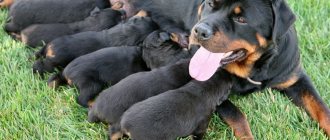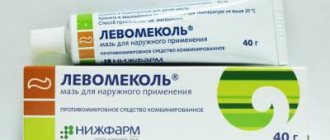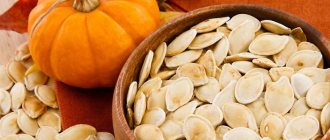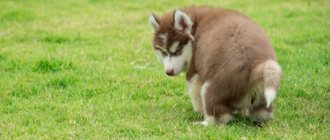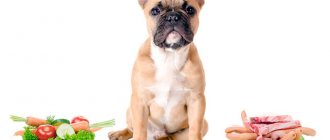A nursing dog needs a special balanced diet, since during lactation it gives a lot of useful substances from its body to newborn puppies along with milk. Thus, a varied diet will help prevent possible problems associated with the growth of the offspring and the health of the mother.
Feeding period and milk composition
The average duration of the feeding period in dogs is 1.5 months. Around the beginning of the 4th week, milk production increases, and after that it declines. It has been scientifically proven that at different times of the lactation period, the amount of food consumed by the bitch should correspond to the volume of milk produced. Some vitamins and minerals do not tend to accumulate in the body, so their absence in food leads to a deficiency of these substances.
Acceptable approximate composition of dog milk:
- 4% lactose;
- 8% fat;
- vitamins;
- minerals.
A few days after giving birth, the bitch's appetite increases. During lactation, her diet should be filled with useful elements and substances:
- mineral salts;
- water;
- fats;
- carbohydrates;
- proteins;
- vitamins.
A healthy dog nursing offspring needs plenty of nourishing food about 5 times a day. It is important to remember that for nursing dogs, a sufficient amount of fresh, clean water is a prerequisite. To increase milk production, you can give her warm tea.
How to tell if your dog has low milk supply
In the first hours and days after birth, colostrum begins to be produced in the mammary glands of mammals. The secret is highly nutritious milk with a high content of immunoglobulins, vitamins, proteins and complete amino acids. Colostrum is a natural immune defense for newborns from pathogenic microbes and viruses, protecting the baby’s body from infections in the first days and even months after birth.
Approximately 3-4 days after the birth of the offspring, the secretion of the mammary glands becomes similar to cow's milk. Its composition contains approximately 2 times more fat than whole cow's milk. For newborns, it is the source of all nutrients and is well absorbed by puppies.
The absence (agalactia) or insufficient amount of milk (hypogalactia) in a domestic dog is not so difficult to recognize. As a rule, the problem is indicated by the behavior of the offspring. Well-fed newborns are not fussy, but calm, sleeping almost all the time, huddling together near the warm belly of their mother. Hungry puppies become active, crawl around the nest in search of food, and squeak a lot.
An owner can also suspect hypogalactia in a dog based on thinness or lack of weight gain in the offspring, with regular monitoring of the newborn's live weight gain.
The problem with a lack of milk secretion is indicated not only by the behavior of the puppies, but also by the mother herself. The dog can leave the nest for a long time, when trying to suckle, it runs away from the babies, sometimes even showing aggression towards them. This behavior is associated with pain when puppies suck on empty mammary glands.
The owner can make sure that the dog has no milk on his own by pressing on the milk nipples. Their examination reveals cracks and roughening. A change in secretion (watery or mucous discharge, abnormal color) may indicate that the animal has mastitis.
We recommend reading about uterine prolapse in dogs. You will learn about the causes of uterine prolapse in an animal, symptoms, diagnostic methods, treatment and care. And here is more information about the symptoms and treatment of vaginitis in dogs.
[custom_ads_shortcode1]
Feeding during labor and immediately after birth
It is not recommended to feed the animal after the first contractions appear. Childbirth should occur exclusively on an empty stomach and there are a number of reasons for this:
- During childbirth, a dog’s body experiences a drop in temperature, a slowdown in metabolism, and indigestion;
- A full intestine makes it difficult for the offspring to move through the birth canal;
- Well-fed dogs experience prolonged contractions that are more severe than hungry ones;
- During childbirth, individuals with a full stomach may experience involuntary vomiting or bowel movements.
Feeding a dog after giving birth depends on whether she ate the afterbirth or not. The placenta contains proteins, vitamins and microelements necessary for the production of colostrum, as well as hormones that promote milk production. After eating the placenta, the animal is fed after 5 hours, but if the dog does not eat postpartum discharge, then you can offer it food after an hour.
To prevent the occurrence of disorder in a dog as a result of eating a large amount of placenta, you can give the animal activated charcoal at the rate of 1 tablet per 1 kg of body weight, or feed it rice porridge once a day for several days to normalize stool.
If a dog has diarrhea after eating a large amount of afterbirth, you need to carefully monitor the animal’s condition. If it gets worse, it may be necessary to use medications. In this case, the puppies will have to be fed with goat's milk or other suitable food until the mother gets better.
After birth, it is necessary to change the bedding and wash the animal’s body from traces of discharge. It is better to place a bowl of water or milk closer to the place where the mother and puppies lie, since at first she will not leave her cubs.
Nutrition for eclampsia in a dog that has given birth
Postpartum toxicosis in dogs, accompanied by eclampsia, is a deadly condition. Typically, small dogs are at risk: toy terriers, Yorkshire terriers, Spitz. The disease is associated with a severe lack of calcium in the body.
- the dog suffers from tremors, convulsive manifestations;
- the animal’s coordination is impaired, its gaze is unfocused;
- the pulse quickens, breathing becomes intermittent;
- the dog cannot be in the light, tries to hide in a secluded place;
- the animal whines for no reason, is worried;
- lack of appetite, refusal of water;
- bitch ignores puppies.
Miniature dogs are prone to developing eclampsia
The owner of a dog that has developed eclampsia must act quickly: five drops of valocordin are poured into the animal’s mouth, then a 10 percent solution of calcium gluconate is forcibly given (2 milliliters per kilogram of weight). Calcium can also be administered intravenously or subcutaneously - for this it is better to contact a veterinary clinic.
If a dog has a tendency to eclampsia, ten days before giving birth, fish and meat, including broths, are completely removed from its diet. After giving birth, the animal must take food and water; if it refuses, the bitch is force-fed and watered. Having consulted with your veterinarian in advance, you should start giving your dog a good calcium supplement two weeks before delivery.
Calcium is the most important element for pregnant and lactating bitches.
Mandatory foods in the diet of a nursing dog
The dog's diet should be varied; only under this condition will lactation proceed without complications for the animal and bring maximum benefit to the puppies.
Products that should be present in the diet of a nursing female:
- Buckwheat, oatmeal, rice and other porridges;
- Lean meat;
- Sea fish;
- By-products;
- Milk;
- Kefir;
- Cottage cheese;
- Fresh vegetables;
- Greenery.
It is important that all products consumed by the dog are of high quality and fresh, otherwise there is a risk of poisoning of the young mother and her puppies.
Feeding your dog by week after birth
All the food that a dog eats during lactation affects the composition of the milk, and, accordingly, the health of the puppies. Therefore, feeding after birth should be as healthy and easy as possible for the dog, and new foods should be introduced into its diet gradually.
Features of feeding a dog during lactation by week after birth:
- 1 week - the daily food intake is divided into 6 meals, with the diet consisting mainly of semi-liquid and liquid foods: fermented milk products, cereals with water or milk. And also at this time it is worth adding vitamin and mineral complexes to the diet of a nursing dog, after consulting with a veterinarian. Meat products are introduced on the fourth day after birth in boiled, crushed form. It's best to start with lean meats such as chicken or rabbit. In addition, you can give your dog offal, fish or cottage cheese in moderation. During the period of introducing new products, it is important to monitor the puppies’ well-being and the absence of diarrhea.
- 2 and 3 weeks – the dog should be fed at least 4-5 times a day. If she is feeding 4 puppies, then her diet should be gradually doubled, and if she has 8, then tripled. The menu includes puree of boiled vegetables: zucchini, pumpkin, beets, cauliflower and carrots. You can also introduce broth-based soups and a small amount of raw boneless meat.
- 1 month – the puppies begin complementary feeding, so the amount of milk they drink gradually decreases. Already from 4 weeks it is necessary to transfer the dog to three meals a day, reducing the amount of food and liquid in its diet. You need to add raw fruits and vegetables, fresh herbs to the nursing mother’s menu.
After the puppies are completely weaned, the dog needs to be given a fasting day, on which the animal can be given a quarter of its usual diet. Over the next 5 days, the amount of food gradually increases.
What if the dog refuses to eat?
Most often, dogs refuse any food about a day before the onset of labor. This is a natural process as the body prepares itself for serious stress and puts itself in the best shape for this. Veterinarians advise not to feed the animal at least 10 hours before the expected birth, even if it does not want to.
There are physiological reasons for this:
- In about a day, the bitch’s body begins to prepare for the upcoming procedure and save energy. At the same time, the temperature decreases by 1 degree, physiological processes slow down, including digestion, so the animal simply does not feel dizzy.
- Puppies passing through the birth canal are a large enough object that can easily trap a full intestine. The less food in the stomach or intestines, the easier the babies pass.
- A full stomach makes it difficult to push, which significantly prolongs the process and adds a lot of unpleasant sensations.
- Contractions are spasms that will affect all muscles in the body in one way or another. If the stomach or intestines are full, it will be impossible to avoid vomiting or diarrhea. Both the first and second processes have an extremely negative impact on the condition of the mother and the babies that are born.
Moreover, food refusal can also be observed in later periods. If, 5-6 hours after finishing the activity, the dog still refuses any food, then you should contact the veterinarian, as this is a bad sign.
This is how some birth traumas or even postpartum depression manifest themselves, which quite often occurs in bitches who have given birth for the first time.
Feeding with prepared food
Feeding dogs accustomed to dry food during lactation should be changed taking into account certain rules:
- immediately after birth, dry food must be soaked in water or replaced with liquid food, since a large amount of water is needed to digest this type of food;
- in addition to feed, the animal’s menu should include fermented milk products and vitamin and mineral supplements;
- The protein ratio in food for lactating bitches should be 24-28%.
Expensive, high-quality food, as a rule, already contains the required amount of vitamins and minerals. If the dog eats cheaper food, then adding food additives to its diet is necessary.
